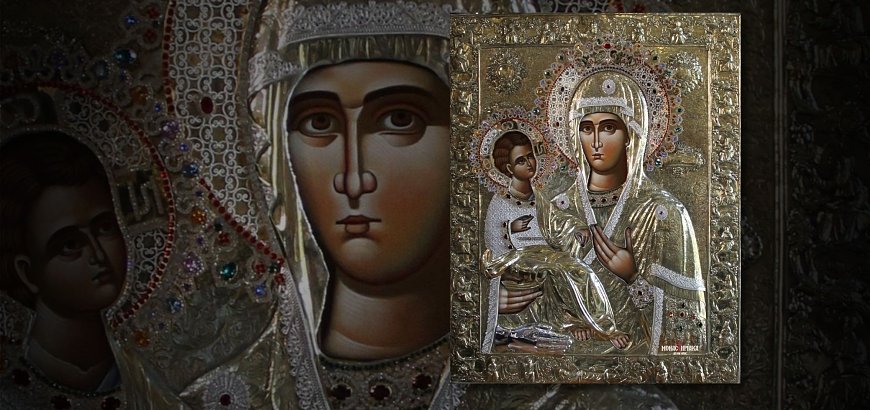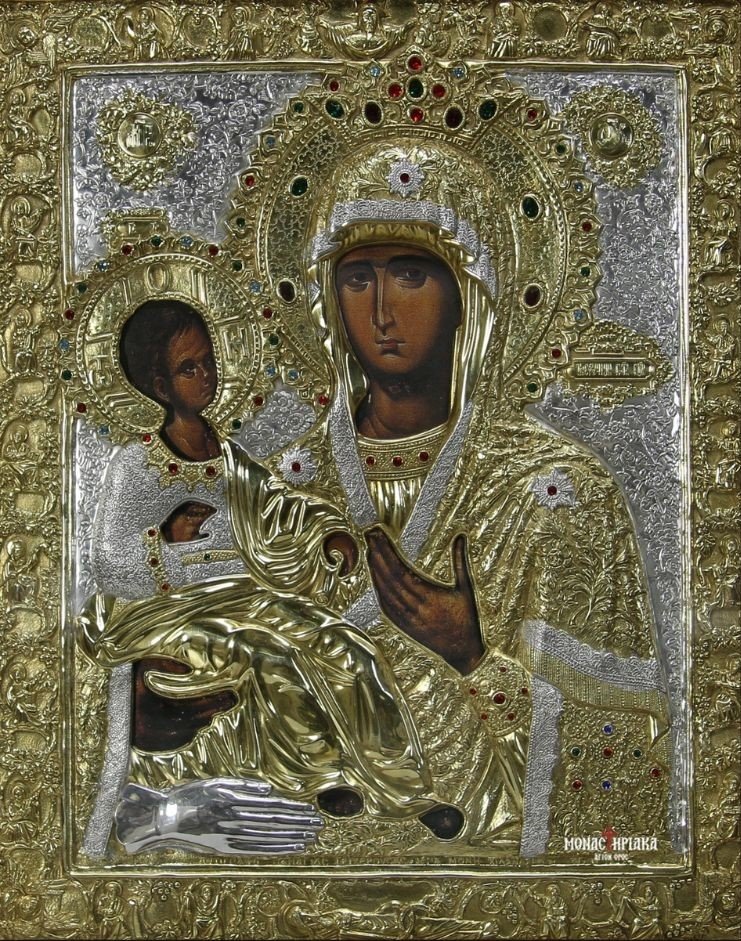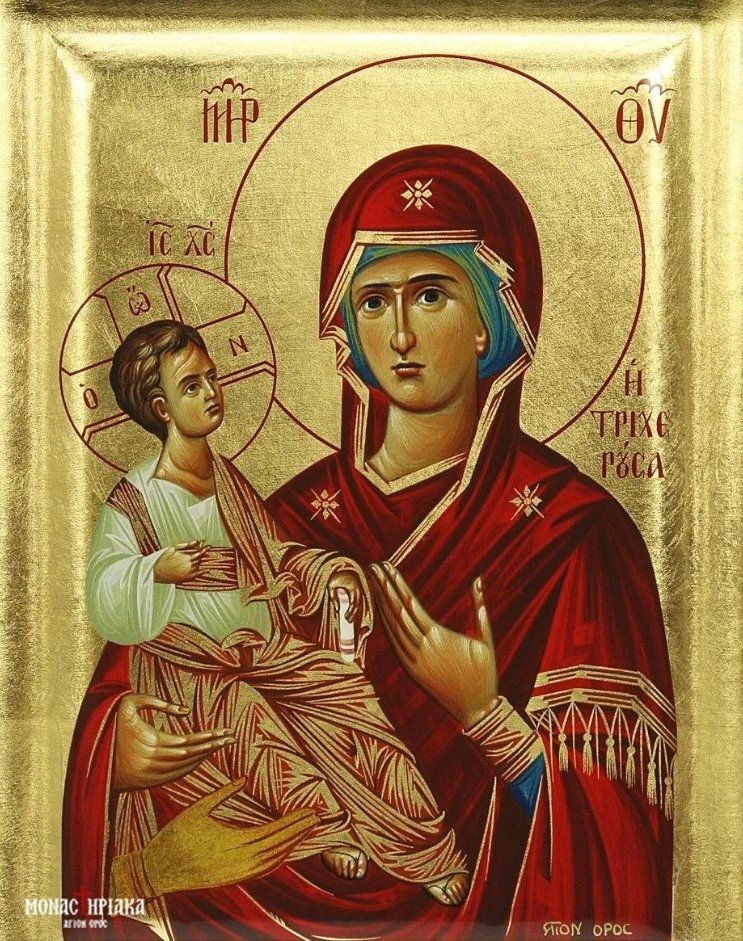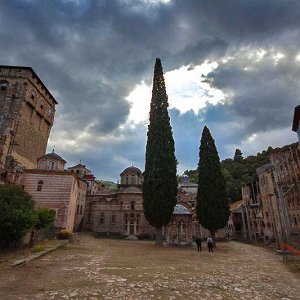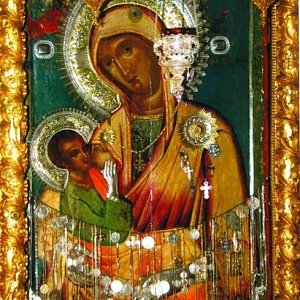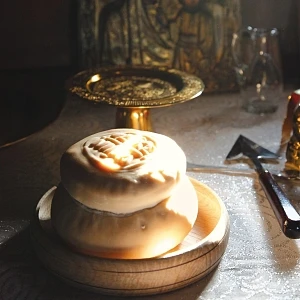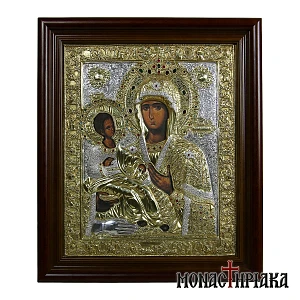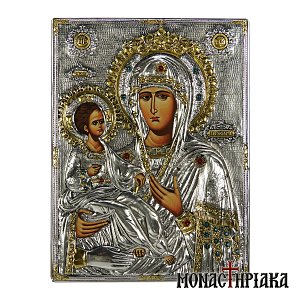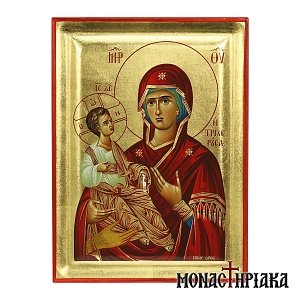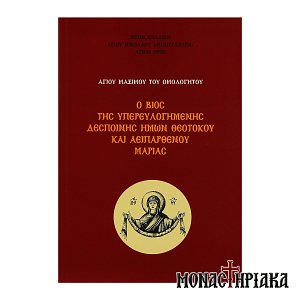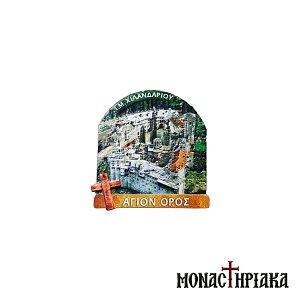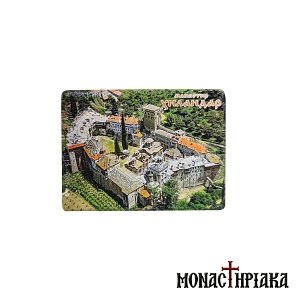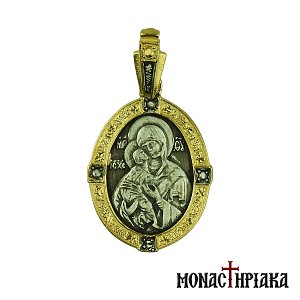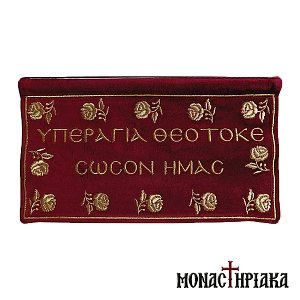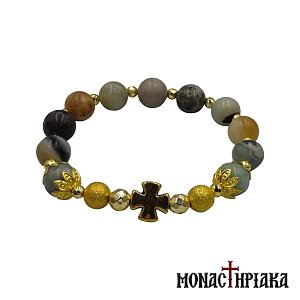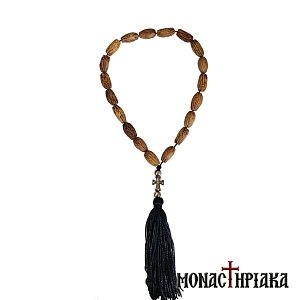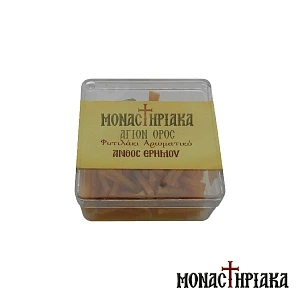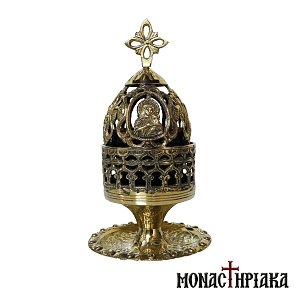Where the icon of the Theotokos Tricherousa originates from
The icon of the Theotokos with Three Hands (Three-Handed or Tricherousa in Greek), one of the miraculous icons of Mount Athos, was an heirloom of Saint John of Damascus. He kept it with great reverence in the chapel of his house.
Who Saint John of Damascus was
Saint John of Damascus served as the main advisor to Caliph Al-Walid during the period 705-715 A.D., for all significant matters concerning the Christians of Syria.
During the Iconoclasm, the Emperor of Constantinople was Leo III the Isaurian. During this period, the veneration of holy icons was forbidden. However, Saint John of Damascus was a fervent defender of the icons. Through his writings, he sought to fight off the pillars of Iconoclasm.
The miracle of St. John of Damascus
Leo III, seeking to undermine Saint John of Damascus, falsely accused him before Caliph Al-Walid, claiming that John secretly sought to conquer Damascus. The Caliph, convinced by this slander, ordered St. John of Damascus to be arrested and had his right hand amputated in the square of Damascus.
Saint John took his severed hand and spent the entire night pleading with the Mother of God to heal him so that he could continue his struggle in defense of Orthodoxy.
Exhausted as he was, he fell asleep and dreamt of the Most Holy Theotokos. The Virgin Mary assured him that his hand would be healed, and indeed, it was so!
Why the icon of the Theotokos is called 'Three-Handed'
When Saint John awoke, he found his hand healed. Overwhelmed by this miracle, he placed a silver effigy of his hand beneath the left side of the icon of the Theotokos.
The replica, as it was placed on the holy icon, appeared to be the third hand of the Theotokos. For this reason, the holy icon came to be known as 'Three-Handed'.
Find here: Icons with the Theotokos Tricherousa.
After this miraculous event, St. John of Damascus decided to relinquish his positions. He became a monk at the Monastery of Saint Savas the Sanctified in Palestine, taking with him the holy icon of the Theotokos Tricherousa.
The icon of the Theotokos Tricherousa remained at the Monastery of Saint Savas until 1217 A.D. During that time, Saint Savas of Hilandar, who was the son of King Stefan Nemanja (later renamed Simeon), visited the monastery.
The Theotokos Trojeručica at the Monastery of Hilandar
It is said that Saint Savas was given the icon of the Theotokos Galaktotrofousa, the icon of the Theotokos Tricherousa, as well as the crutch of the founder of the Monastery. Saint Savas transferred the icon to the Monastery of Hilandar on Mount Athos, where it remained until 1347 A.D.
The transfer of the holy icon to Serbia
During the same period, the Monastery was visited by King Dushan of Serbia. Upon his departure, he took with him the holy icon of the Theotokos Tricherousa as a blessing. Thus, the holy icon was transported and hosted at the Monastery of Studenica in Serbia.
The miraculous return of the icon to Mount Athos
In the early 15th century, the Serbians learned that they were threatened with subjugation by the Turks. They immediately took the icon of the Theotokos Tricherousa from the Serbian monastery and strapped it to the back of a donkey. Then, they set the donkey free, allowing it to go wherever the Theotokos desired.
The animal crossed all of Serbia and then the region of Macedonia, eventually arriving at Mount Athos, at the Monastery of Hilandar. When the monks saw the donkey with the icon of the Theotokos Tricherousa upon it, they welcomed it with great honor and litanies.
Read here:
Where the icon of the Theotokos Trojeručica is located today
According to orthodox tradition, the animal passed away as soon as the icon of the Theotokos Tricherousa was placed at the Monastery of Hilandar, the Serbian monastery on Mount Athos. Since then, the icon has remained at the monastery and is revered as the Patroness and Abbess of the Monastery, as well as the Protector of Serbia.
What the icon of the Theotokos Tricherousa depicts
Today, the icon of the Theotokos Tricherousa is preserved in excellent condition and stands as one of the oldest Byzantine representations of the Most Holy Theotokos. The Mother of God is depicted in the iconographic type of the Hodegetria, with an emblematic expression and a most gentle gaze, holding the Lord Jesus Christ.
The holy icon evokes deep emotion and admiration in those who behold and venerate it. Indeed, for the sake of grandeur and protection, it is covered with a gold cover, upon which are set five thousand precious stones.
